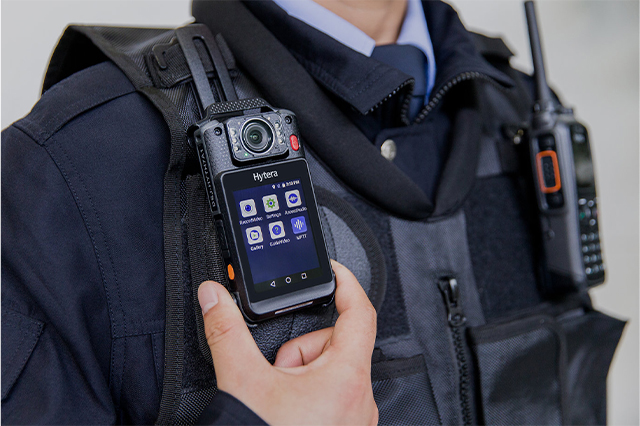Body Worn Camera
Body Worn Camera
A Body-Worn Camera (BWC) is a compact recording device designed to be worn by an individual, typically on their clothing or uniform. These cameras are widely used by law enforcement officers, security personnel, and other professionals who may benefit from recording audio and video footage during their activities. Here are some key features and aspects of body-worn cameras:

Recording Capabilities : Body-worn cameras are designed to capture audio and video footage from the wearer’s perspective. The footage is often stored on the camera’s internal memory or on removable storage media such as microSD cards.
Compact Design : BWCs are typically small, lightweight, and unobtrusive, making them easy to wear without hindering the wearer’s movements or activities.
Audio and Video Quality : The quality of audio and video recording can vary among different body-worn camera models. Higher-end models may offer features such as high-definition video recording and advanced audio capture capabilities.
Wide-Angle Lens : Many body-worn cameras feature wide-angle lenses to capture a broad field of view, ensuring that important details are recorded even in dynamic and fast-paced situations.
Durability and Weather Resistance : Given the nature of their use, body-worn cameras are often built to be durable and resistant to the elements. They may have features like water resistance to withstand various environmental conditions.
Battery Life : Battery life is a crucial consideration for body-worn cameras, as they need to operate for extended periods without requiring frequent recharging. The duration of continuous recording time can vary depending on the camera model and settings.
User Controls : BWCs typically have user-friendly controls, allowing the wearer to start and stop recording easily. Some models may also include features like pre-event buffering, where the camera captures a short segment of video before the recording is manually initiated.
Data Security and Encryption : Given the sensitive nature of the recorded footage, many body-worn cameras incorporate security features such as encryption to protect the integrity and confidentiality of the data.
Integration with Evidence Management Systems : The recorded footage from body-worn cameras is often managed through specialized software or evidence management systems. This allows for proper storage, organization, and retrieval of video and audio recordings.
Accountability and Transparency : Body-worn cameras are used to enhance accountability and transparency in law enforcement and other professions. The presence of a camera can deter misconduct and provide an objective record of interactions.
The use of body-worn cameras has become increasingly common in various fields to document incidents, gather evidence, and improve accountability in professional activities. However, their use also raises important considerations regarding privacy, data management, and policies surrounding their deployment and usage.
